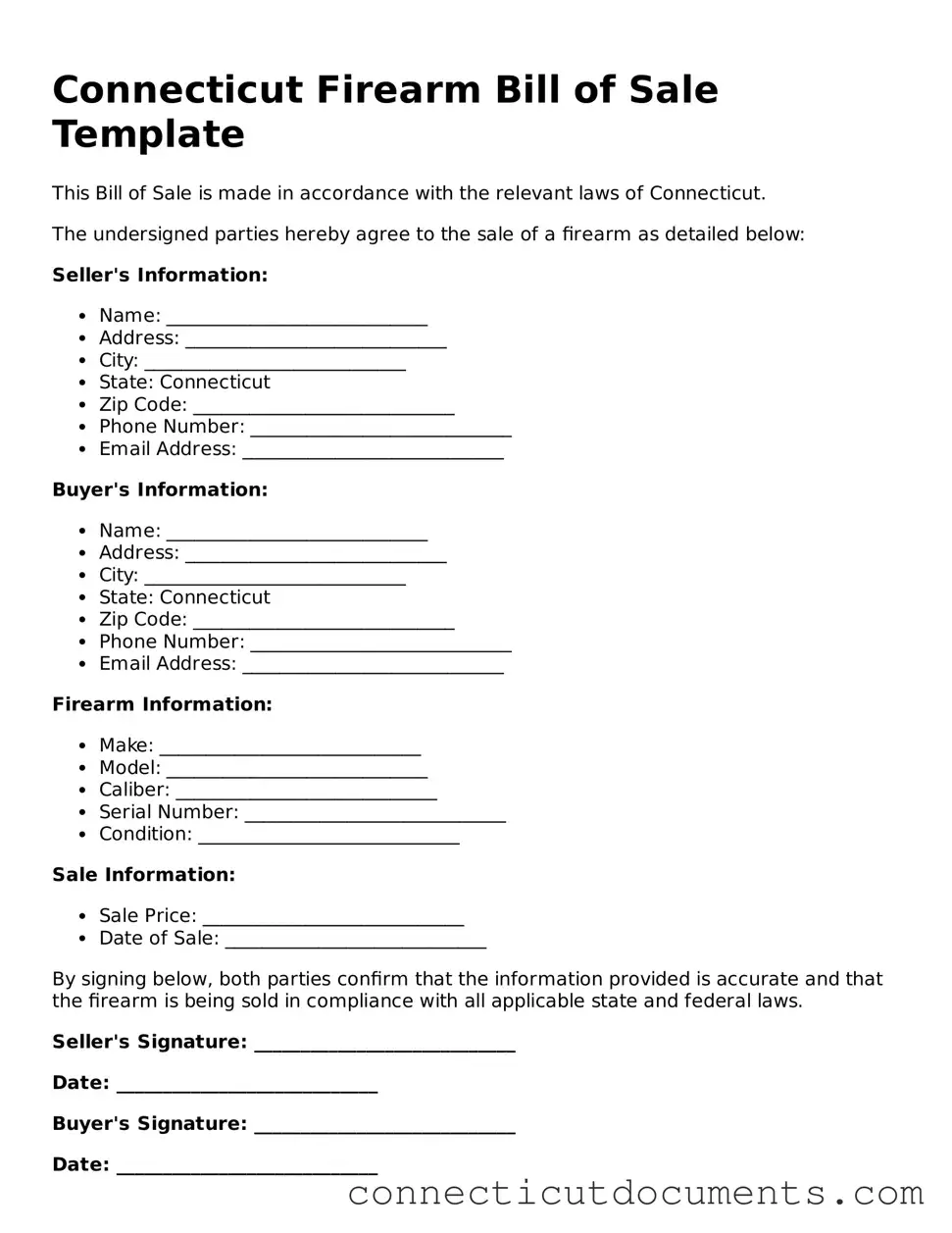What is a Connecticut Firearm Bill of Sale form?
The Connecticut Firearm Bill of Sale form is a document that records the sale and transfer of a firearm between a seller and a buyer. It serves as proof of the transaction and includes important details such as the make, model, and serial number of the firearm, as well as the names and signatures of both parties involved in the sale.
Is a Bill of Sale required for firearm transactions in Connecticut?
While a Bill of Sale is not legally required for all firearm transactions in Connecticut, it is highly recommended. Having this document can provide legal protection for both the buyer and the seller. It helps to establish ownership and can be useful in case of future disputes or questions regarding the firearm's history.
What information should be included in the Bill of Sale?
A comprehensive Bill of Sale should include the following information: the full names and addresses of both the buyer and seller, the date of the transaction, a detailed description of the firearm (including make, model, caliber, and serial number), and the purchase price. Both parties should also sign and date the document to validate the transaction.
Can I create my own Bill of Sale, or do I need a specific form?
You can create your own Bill of Sale as long as it includes all the necessary information. However, using a standardized form can simplify the process and ensure that you do not miss any important details. Many resources are available online that provide templates specifically designed for firearm transactions.
Do I need to have the Bill of Sale notarized?
In Connecticut, notarization is not a requirement for a Bill of Sale related to firearms. However, having the document notarized can add an extra layer of authenticity and may be beneficial if there are any disputes in the future. It is ultimately up to the parties involved to decide if they wish to have it notarized.
What should I do with the Bill of Sale after the transaction?
After the transaction, both the buyer and the seller should keep a copy of the Bill of Sale for their records. This document serves as proof of the transfer and can be important for future reference, especially if questions arise regarding ownership or the firearm's history.
Are there any specific laws I should be aware of when selling a firearm in Connecticut?
Yes, there are specific laws governing firearm sales in Connecticut. Sellers must ensure that the buyer is legally eligible to purchase a firearm, which typically involves verifying that they possess a valid pistol permit or a long gun eligibility certificate. Additionally, it is crucial to comply with all state and federal regulations regarding firearm sales, including background checks when applicable.
